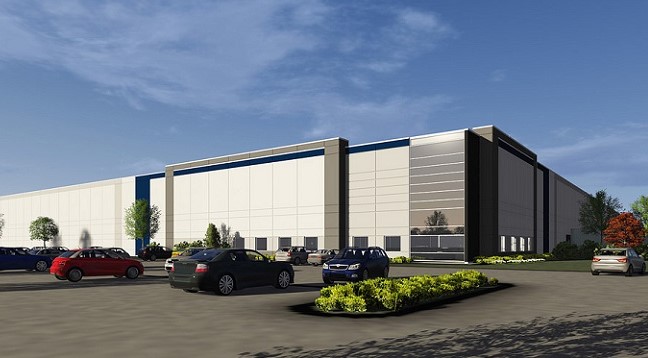
CHICAGO—The expansion of e-commerce has helped fuel much of the recent growth in the industrial real estate market, especially within the distribution sector. However, even though those gains are real and significant, the sector has other sources of strength, and these should help sustain demand, and an on-going construction boom, for at least another 18 months.
The recent experiences of HSA Commercial Real Estate have been fairly typical. In the past few years, the Chicago-based developer completed or launched a number of speculative projects in the metro areas of Chicago, Indianapolis and Nashville. And in each case, tenants have eagerly snapped up the space.
“These projects have exceeded our expectations,” Bob Smietana, chief executive officer of HSA, tells GlobeSt.com. Its most recent completion in the Indianapolis area, a 151,220-square-foot speculative warehouse in suburban Plainfield, took just five months to fill. Tenants also fully occupied the adjacent building, a 220,000-square-foot spec completed in 2015.
Much of the space was taken by an automotive supplier. And Kuehne + Nagel International AG, a Swiss 3PL, took another large chunk. The latter company uses their space to distribute products for aerospace, pharmaceutical, and medical device firms. “There isn't an e-commerce provider in that group,” Smietana points out.

Furthermore, HSA also recently completed Commerce Farms V, a 652,000-square-foot spec industrial building at Commerce Farms Business Center in suburban Nashville. It already has a tenant to occupy about 60% of its space, and HSA is negotiating another lease for the rest. Smietana expects this building will be fully occupied just eight months after completion.
“I don't want to discount the 'Amazon effect,'” he adds. “That is clearly there, but it's not just Amazon or e-commerce.” Companies of all kinds are now looking for new class A spaces, typically with higher ceilings, advanced lighting, more truck docks, and many other features.
“The old days of using a tin shack to store materials is a bygone era,” he says. Ten or fifteen years ago, distribution centers typically had 18' to 24' ceilings, but today, high-tech tools make it easier to organize and manage cubes with 32' or 36' heights.
In addition, the economic collapse of ten years ago is still having a big influence on demand today. “The market still hasn't caught up,” Smietana says, to the demand that built up during the years when developers had to suspend most new projects. And even though the amount of new construction in the past few years seems historic, “we still haven't hit the level of building we reached in 2007.”
HSA just closed on the purchase of another 19 acres in Plainfield, IN, and will soon develop a 262,578-square-foot warehouse there, its fifth in the Indianapolis area. “We believe that demand will continue to strong,” Smietana says.

CHICAGO—The expansion of e-commerce has helped fuel much of the recent growth in the industrial real estate market, especially within the distribution sector. However, even though those gains are real and significant, the sector has other sources of strength, and these should help sustain demand, and an on-going construction boom, for at least another 18 months.
The recent experiences of HSA Commercial Real Estate have been fairly typical. In the past few years, the Chicago-based developer completed or launched a number of speculative projects in the metro areas of Chicago, Indianapolis and Nashville. And in each case, tenants have eagerly snapped up the space.
“These projects have exceeded our expectations,” Bob Smietana, chief executive officer of HSA, tells GlobeSt.com. Its most recent completion in the Indianapolis area, a 151,220-square-foot speculative warehouse in suburban Plainfield, took just five months to fill. Tenants also fully occupied the adjacent building, a 220,000-square-foot spec completed in 2015.
Much of the space was taken by an automotive supplier. And Kuehne + Nagel International AG, a Swiss 3PL, took another large chunk. The latter company uses their space to distribute products for aerospace, pharmaceutical, and medical device firms. “There isn't an e-commerce provider in that group,” Smietana points out.

Furthermore, HSA also recently completed Commerce Farms V, a 652,000-square-foot spec industrial building at Commerce Farms Business Center in suburban Nashville. It already has a tenant to occupy about 60% of its space, and HSA is negotiating another lease for the rest. Smietana expects this building will be fully occupied just eight months after completion.
“I don't want to discount the 'Amazon effect,'” he adds. “That is clearly there, but it's not just Amazon or e-commerce.” Companies of all kinds are now looking for new class A spaces, typically with higher ceilings, advanced lighting, more truck docks, and many other features.
“The old days of using a tin shack to store materials is a bygone era,” he says. Ten or fifteen years ago, distribution centers typically had 18' to 24' ceilings, but today, high-tech tools make it easier to organize and manage cubes with 32' or 36' heights.
In addition, the economic collapse of ten years ago is still having a big influence on demand today. “The market still hasn't caught up,” Smietana says, to the demand that built up during the years when developers had to suspend most new projects. And even though the amount of new construction in the past few years seems historic, “we still haven't hit the level of building we reached in 2007.”
HSA just closed on the purchase of another 19 acres in Plainfield, IN, and will soon develop a 262,578-square-foot warehouse there, its fifth in the Indianapolis area. “We believe that demand will continue to strong,” Smietana says.
Want to continue reading?
Become a Free ALM Digital Reader.
Once you are an ALM Digital Member, you’ll receive:
- Breaking commercial real estate news and analysis, on-site and via our newsletters and custom alerts
- Educational webcasts, white papers, and ebooks from industry thought leaders
- Critical coverage of the property casualty insurance and financial advisory markets on our other ALM sites, PropertyCasualty360 and ThinkAdvisor
Already have an account? Sign In Now
*May exclude premium content© 2025 ALM Global, LLC, All Rights Reserved. Request academic re-use from www.copyright.com. All other uses, submit a request to [email protected]. For more information visit Asset & Logo Licensing.








